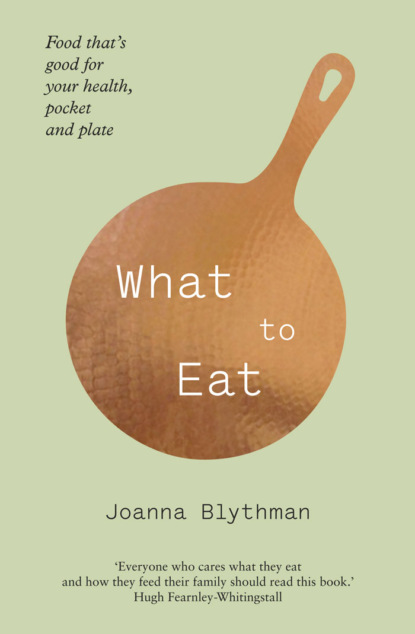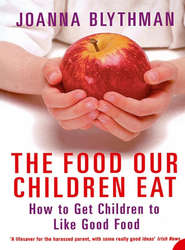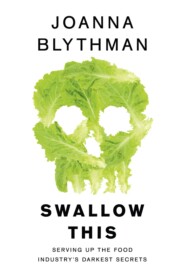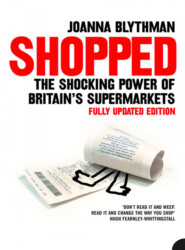По всем вопросам обращайтесь на: info@litportal.ru
(©) 2003-2024.
✖
What to Eat: Food that’s good for your health, pocket and plate
Автор
Год написания книги
2019
Настройки чтения
Размер шрифта
Высота строк
Поля
Grapes
Nectarines, peaches and apricots
Pears
Plums, greengages and damsons
Pomegranates
Raspberries, blackberries and blueberries
Rhubarb
Strawberries
Chapter 6 - Larder
Eggs
Grains
Breakfast cereals
Bread
Pasta
Nuts and seeds
Dried and candied fruits
Pulses
Sugar and other sweeteners
Oils
Margarines and spreads
Soya foods
Chocolate
Salt
Spices and aromatics
Lists
Acknowledgments
About the Author
By the Same Author:
Copyright
About the Publisher (#litres_trial_promo)
Introduction
One night I was talking to a friend who was complaining about how hard she found it to shop for food. She was tight for cash, she explained, which made it difficult to afford the more ethical, progressive food she aspired to. She tended to shop on the way home from work, when only one smaller-format chain supermarket with a limited, overpriced selection, heavily skewed to convenience food, was still open. And that was only half the problem. Tired and uninspired by the dullness of the food on offer, she still had to dream up ideas for something to cook when she got home, then prepare it, and fit all that in with other activities, like going to the gym and doing the washing. Net result? ‘I’m not eating as well, or as healthily, as I’d like to,’ she said. ‘Food is just so complicated.’
This got me thinking. Is food really that complicated, or does it just seem that way? Surely there must be a clear, practical way to help people recognize and locate food that’s good in the broadest sense of that word: food that’s healthy, affordable, doesn’t trash the environment, exploit producers or cause unnecessary animal suffering, and, last but not least, tastes great?
So I wrote this book, a distillation of many disparate types of information about common foods that are not yet, as far as I know, brought together in any other place. Being impatient and, like many people, often short of time, I am a great believer in executive summaries, so any reader can cut to the chase, so to speak, by reading my 20 guiding principles for eating good food.
But broad generalities can’t answer many of the pressing food dilemmas of the day, so all the foods we eat commonly are then discussed in detail, either individually, or in their family groups. Each section is free-standing. What to Eat is a reference book after all, so you can dip into the section on breakfast cereals, say, without having first read the one on grains. This inevitably means that there is some repetition, but of course you can skip over that.
To steer readers in the direction of the best food – what to eat – I have dished up some unsavoury facts about the worst stuff – what not to eat. This isn’t meant to put you off eating, just remind you of why it’s worthwhile seeking out something better.
Food is a contentious subject, so as well as picking up lots of useful information and the odd flash of inspiration, anyone who reads this book will get a mini crash course in the live debates in this field. What to Eat looks at food from a 360-degree angle (or at least takes a few purposeful steps in that direction). I hope it will help anyone, anywhere, make the best possible all-round choice, irrespective of personal circumstances.
The 20 principles of
eating, made simple
Base your diet on real, unprocessed food
This is the bedrock principle of this book, and you can’t go too far wrong if you follow it. Nature is a very clever, intricate system and natural foods in their whole, unprocessed form have an intrinsic nutritional integrity. We know this because humans have been eating them for centuries. We don’t yet, and may never, fully understand all the complex interrelationships between the major and minor nutritional components that go to make up familiar foods such as eggs, meat, fruits, vegetables and grains, but we do know that they act in synergy, supporting and enhancing one another, adding up to one wholesome entity. If you choose mainly unprocessed, or only minimally processed food, and regularly eat a variety of different foods from all the major food groups, then you really don’t need to worry too much about being healthy.
See the value of cooking
Even if you can’t cook meals from scratch all the time, it is important to recognize that cooking from raw materials gives you infinitely more control over the quality of what you eat than if you rely on convenience foods. The more food you eat that isn’t home-made, the poorer your diet is likely to be, both in terms of nutrition, and the quality and provenance of the ingredients used. If you surrender sovereignty of what you eat by becoming dependent on convenience foods, the fatter you, and any other members of your household, are likely to become and the more readily your nagging concerns about not eating well can be exploited by food manufacturers selling you technofoods that make dubious health claims. Every meal that you take back under your control by cooking yourself, the better your health and your spirits will be, and the more pleasure you will get from the act of eating.
If you have got out of, or have never acquired, the habit of cooking, revisit this default setting. Cooking needn’t be arduous. If you are one of those people who only think about food at the last minute, you may find yourself in shops where your choice is likely to be very restricted, and therefore forced to buy a lot of expensive rubbish. To alter your habits, you will need to decide in advance roughly what you are going to eat, then make sure that you have the ingredients. Other more creative cooks get ideas from shopping in stimulating places with inspiring ingredients, such as markets and small food shops, and then just come home and throw it all together. Either way, you can make life easier for yourself by cooking more than you need so that you can have the same thing later in the week, perhaps in a slightly different form or with different accompaniments. And here, your freezer will prove to be a trusty friend. Cook once, eat twice, or even thrice.
Don’t be a sucker for processed foods
Here’s one thing you need to know: the more processed a food is, the worse it is for you. Food processing is the food industry’s way of making profit by taking apart natural foods and reinventing them in more lucrative form. Not usually to your nutritional benefit either, irrespective of what the label might claim. Commodity crops like wheat and corn, stripped of most of their beneficial nutrients, then loaded with sugar, salt and a sprinkling of synthetic vitamins, are presented as a nutritious breakfast. Industrially refined oils are chemically hardened, mixed with additives and water then reborn as ‘heart-healthy’ spreads. Who needs them?
Reconstructed, over-processed foods don’t have the trustworthy track record of whole foods in their natural form. They contain novel ingredients and obscure additives produced by hi-tech methods and have only been on our plates for a relatively short period of time. This is already long enough to suggest that they are significant contributors to the major modern problems of obesity, food allergies and diet- related disease.
OK, there are exceptions. Cheese, butter, yogurt and bread are all processed foods, and, let’s face it, few of us are going to get round to making these ourselves. But you can buy those that were made in the traditional way, using time-honoured techniques to alter primary ingredients.
Don’t buy food with ingredients you won’t find in a domestic larder
It’s a safe bet that you don’t have mono- and diglycerides of fatty acids in your storecupboard, nor high-fructose corn syrup, guar gum, partially hydrogenated vegetable fat, soya protein isolate, liquid pasteurized egg nor maltodextrin. The only people who have these, and other weird but not wonderful synthetic chemical food ingredients lining their shelves, are lab-coated food technologists whose job is to find new and ever more inventive ways to make even more money from the over-processing of food. And guess what? Your health is not their priority. So if you don’t know what an ingredient is, or it has a long, unpronounceable name that reads like an algebraic formula, then don’t buy any food product containing it. Every item you see listed on an ingredient label should be readily understandable and familiar. If it isn’t, avoid it like the plague.










